Top Rankings
Malvern School District ranks among the top 20% of public school district in Arkansas for:
Category
Attribute
Graduation Rate
Highest graduation rate (Top 20%)
Diversity
Most diverse schools (Top 1%)
For the 2025 school year, there is 1 public middle school serving 287 students in Malvern School District. This district's average middle testing ranking is 2/10, which is in the bottom 50% of public middle schools in Arkansas.
Public Middle School in Malvern School District have an average math proficiency score of 23% (versus the Arkansas public middle school average of 36%), and reading proficiency score of 27% (versus the 42% statewide average).
Minority enrollment is 51% of the student body (majority Black), which is more than the Arkansas public middle school average of 41% (majority Black).
Overview
This School District
This State (AR)
# Schools
4 Schools
352 Schools
# Students
1,825 Students
147,541 Students
# Teachers
163 Teachers
13,335 Teachers
Student : Teacher Ratio
11:1
11:1
District Rank
Malvern School District, which is ranked within the bottom 50% of all 258 school districts in Arkansas (based off of combined math and reading proficiency testing data) for the 2021-2022 school year.
The school district's graduation rate of 90-94% has increased from 85-89% over five school years.
Overall District Rank
#218 out of 259 school districts
(Bottom 50%)
(Bottom 50%)
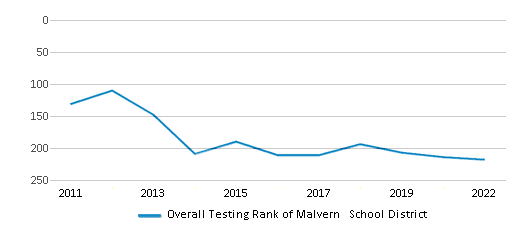
Math Test Scores (% Proficient)
23%
38%
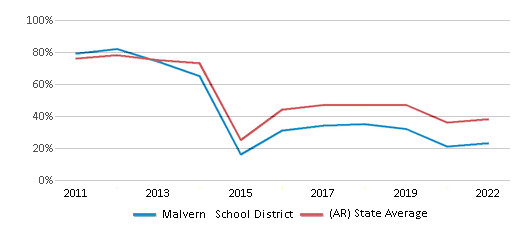
Reading/Language Arts Test Scores (% Proficient)
24%
40%
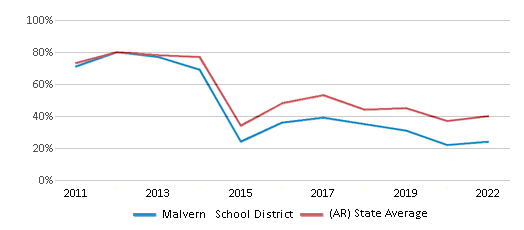
Science Test Scores (% Proficient)
24%
36%
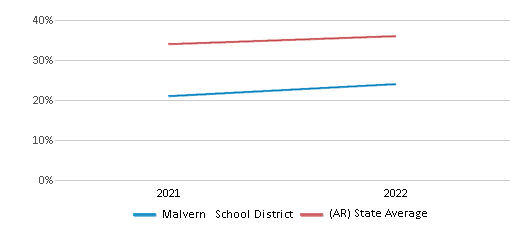
Graduation Rate
90-94%
88%
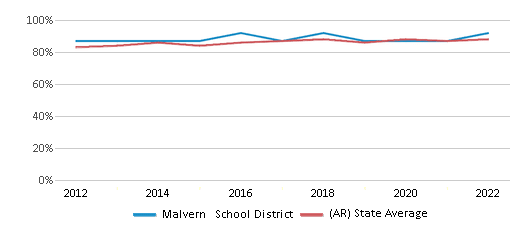
Students by Ethnicity:
Diversity Score
0.67
0.60
# American Indian Students
9 Students
846 Students
% American Indian Students
n/a
1%
# Asian Students
10 Students
2,865 Students
% Asian Students
1%
2%
# Hispanic Students
210 Students
21,477 Students
% Hispanic Students
11%
14%
# Black Students
506 Students
28,045 Students
% Black Students
28%
19%
# White Students
874 Students
87,000 Students
% White Students
48%
59%
# Hawaiian Students
1 Student
1,533 Students
% Hawaiian Students
n/a
1%
# Two or more races Students
215 Students
5,775 Students
% of Two or more races Students
12%
4%
Students by Grade:
# Students in PK Grade:
-
20
# Students in K Grade:
133
725
# Students in 1st Grade:
143
806
# Students in 2nd Grade:
128
836
# Students in 3rd Grade:
150
826
# Students in 4th Grade:
126
1,120
# Students in 5th Grade:
153
4,995
# Students in 6th Grade:
125
20,844
# Students in 7th Grade:
134
36,641
# Students in 8th Grade:
151
37,270
# Students in 9th Grade:
136
18,603
# Students in 10th Grade:
147
8,958
# Students in 11th Grade:
150
8,347
# Students in 12th Grade:
137
7,514
# Ungraded Students:
12
36
District Revenue and Spending
The revenue/student of $14,144 is higher than the state median of $13,132. The school district revenue/student has grown by 7% over four school years.
The school district's spending/student of $15,176 is higher than the state median of $13,043. The school district spending/student has grown by 7% over four school years.
Total Revenue
$26 MM
$6,371 MM
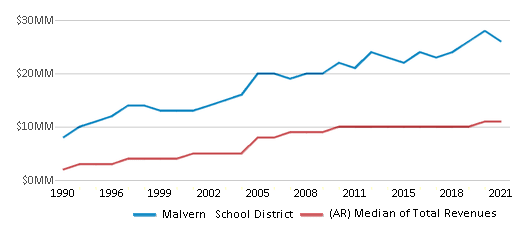
Spending
$28 MM
$6,327 MM
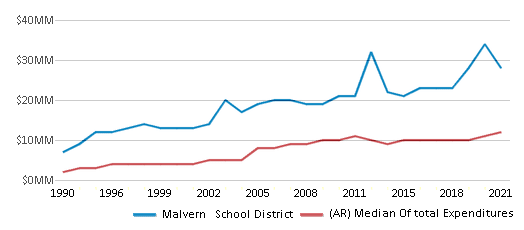
Revenue / Student
$14,144
$13,132
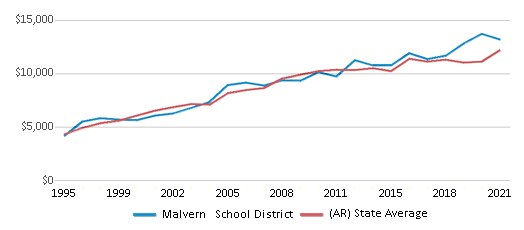
Spending / Student
$15,176
$13,043
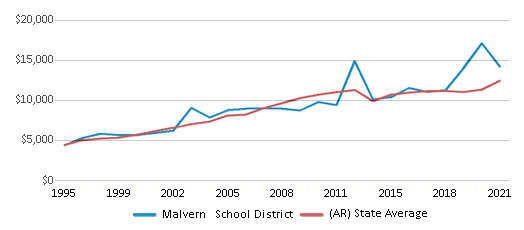
Best Malvern School District Public Middle Schools (2025)
School
(Math and Reading Proficiency)
(Math and Reading Proficiency)
Location
Grades
Students
Rank: #11.
Malvern Middle School
(Math: 23% | Reading: 27%)
Rank:
Rank:
3/
Bottom 50%10
1910 Sulton St
Malvern, AR 72104
(501) 332-7530
Malvern, AR 72104
(501) 332-7530
Grades: 7-8
| 287 students
Recent Articles

Year-Round Or Traditional Schedule?
Which is more appropriate for your child? A year-round attendance schedule or traditional schedule? We look at the pros and cons.

Why You Should Encourage Your Child to Join a Sports Team
Participating in team sports has a great many benefits for children, there is no doubt. In this article you will learn what those benefits are.

White Students are Now the Minority in U.S. Public Schools
Increasing birth rates among immigrant families from Asia and Central and South America, combined with lower birth rates among white families, means that for the first time in history, public school students in the United States are majority-minority. This shift in demographics poses difficulties for schools as they work to accommodate children of varying language abilities and socio-economic backgrounds.





